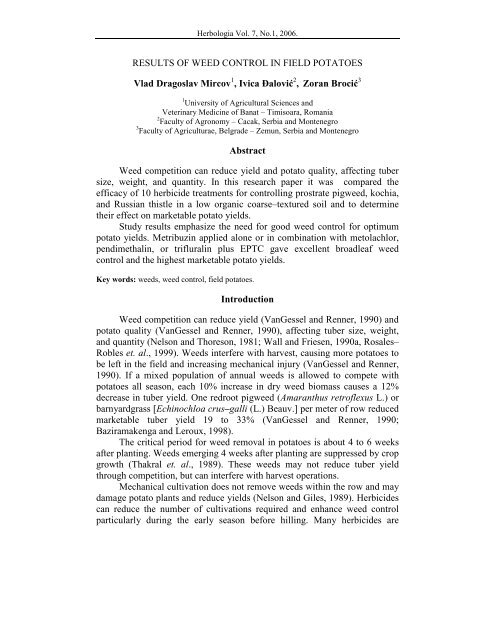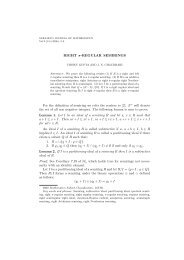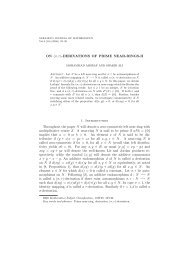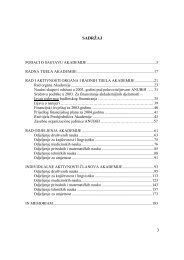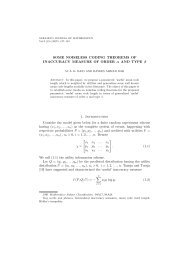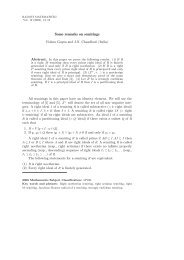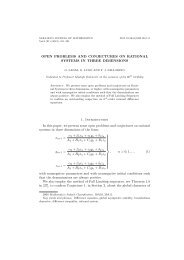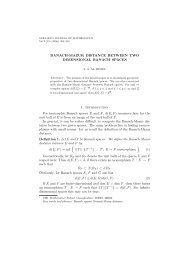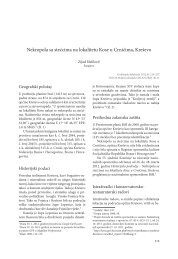HERBOLOGIA - anubih
HERBOLOGIA - anubih
HERBOLOGIA - anubih
You also want an ePaper? Increase the reach of your titles
YUMPU automatically turns print PDFs into web optimized ePapers that Google loves.
Herbologia Vol. 7, No.1, 2006.<br />
RESULTS OF WEED CONTROL IN FIELD POTATOES<br />
Vlad Dragoslav Mircov 1 , Ivica ðalović 2 , Zoran Brocić 3<br />
1 University of Agricultural Sciences and<br />
Veterinary Medicine of Banat – Timisoara, Romania<br />
2 Faculty of Agronomy – Cacak, Serbia and Montenegro<br />
3 Faculty of Agriculturae, Belgrade – Zemun, Serbia and Montenegro<br />
Abstract<br />
Weed competition can reduce yield and potato quality, affecting tuber<br />
size, weight, and quantity. In this research paper it was compared the<br />
efficacy of 10 herbicide treatments for controlling prostrate pigweed, kochia,<br />
and Russian thistle in a low organic coarse–textured soil and to determine<br />
their effect on marketable potato yields.<br />
Study results emphasize the need for good weed control for optimum<br />
potato yields. Metribuzin applied alone or in combination with metolachlor,<br />
pendimethalin, or trifluralin plus EPTC gave excellent broadleaf weed<br />
control and the highest marketable potato yields.<br />
Key words: weeds, weed control, field potatoes.<br />
Introduction<br />
Weed competition can reduce yield (VanGessel and Renner, 1990) and<br />
potato quality (VanGessel and Renner, 1990), affecting tuber size, weight,<br />
and quantity (Nelson and Thoreson, 1981; Wall and Friesen, 1990a, Rosales–<br />
Robles et. al., 1999). Weeds interfere with harvest, causing more potatoes to<br />
be left in the field and increasing mechanical injury (VanGessel and Renner,<br />
1990). If a mixed population of annual weeds is allowed to compete with<br />
potatoes all season, each 10% increase in dry weed biomass causes a 12%<br />
decrease in tuber yield. One redroot pigweed (Amaranthus retroflexus L.) or<br />
barnyardgrass [Echinochloa crus–galli (L.) Beauv.] per meter of row reduced<br />
marketable tuber yield 19 to 33% (VanGessel and Renner, 1990;<br />
Baziramakenga and Leroux, 1998).<br />
The critical period for weed removal in potatoes is about 4 to 6 weeks<br />
after planting. Weeds emerging 4 weeks after planting are suppressed by crop<br />
growth (Thakral et. al., 1989). These weeds may not reduce tuber yield<br />
through competition, but can interfere with harvest operations.<br />
Mechanical cultivation does not remove weeds within the row and may<br />
damage potato plants and reduce yields (Nelson and Giles, 1989). Herbicides<br />
can reduce the number of cultivations required and enhance weed control<br />
particularly during the early season before hilling. Many herbicides are


